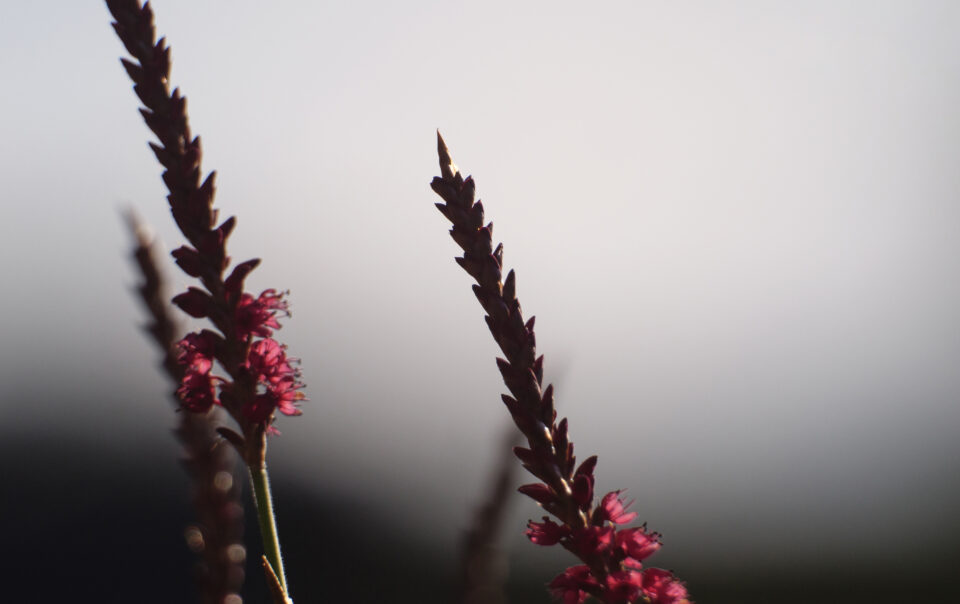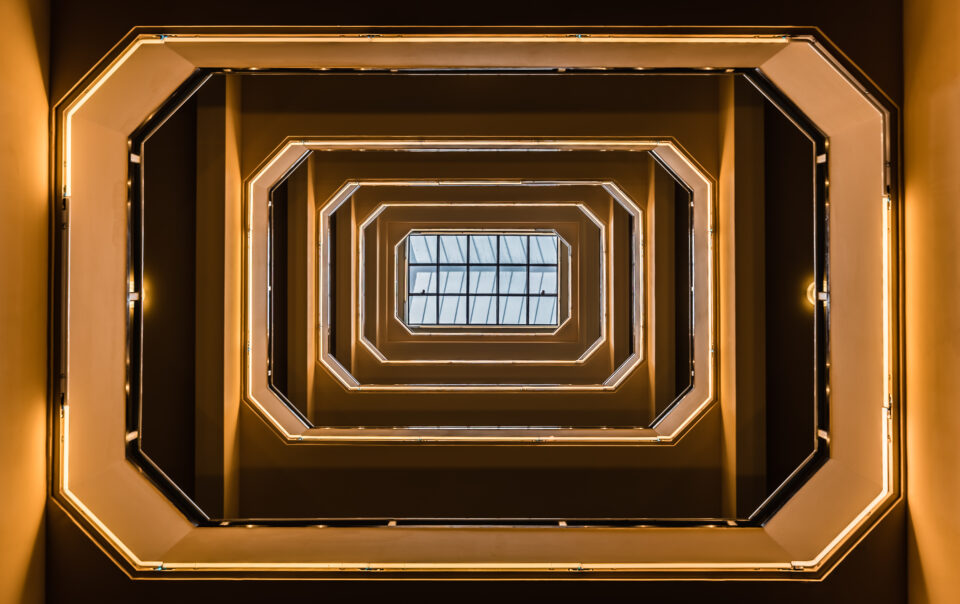(english below)
Op 30 september komt er een nieuwe release uit voor mijn GPS: In a landscape van John Cage. Omdat deze muziek toch wat controverse uitlokt, maakte ik 4 kortere blogs die elk een stukje curiositeit rond de persoon van John Cage beschrijven.
Part four: In a landscape
Hoewel sommigen hem een charlatan noem(d)en, streefde Cage ernaar het leven en de kunst die we in dat leven produceren, niet van elkaar te scheiden maar veeleer de esthetiek van de omgeving waarin die kunst zich bevindt, te laten zijn; mensen komen naar een bepaalde plek, om kunst te zien of te horen, maar vergeten te kijken naar de dingen rondom hen, de kunst die zich in het leven bevindt.
“There is no such thing as an empty space or an empty time, there is always something to see, something to hear. In fact, try as we may to make a silence, we cannot.”
Het hoeft geen uitleg dat zulke radicale ommekeer in de benadering van muziek zeer hevige reacties uitlokte. Je was niet gematigd voor Cage, je was voor of tegen. Toch kunnen we hem beschouwen als één van de meest invloedrijke componisten van zijn tijd en bracht hij op alle niveaus in de maatschappij discussies op gang.
En zie, zoveel jaren later zijn we naarstig op zoek naar de technische mogelijkheden om die luisterervaring zo realistisch mogelijk te maken; immersive sound(een nieuwe opname techniek die volop zijn terrein aan het nemen is) capteert immers niet alleen het gespeelde werk, maar neemt ook de omgevingsgeluiden mee. Zo luisteren we niet meer naar een overdreven propere en opgekuiste opname, zonder enig ‘storend’ menselijk geluid -waar we jaren naar streefden- maar naar een meer waarheidsgetrouwe weergave van performance, ruimte en publiek.
In 1948 schreef John Cage ‘In a landscape’, een werk dat een choreografie van Merce Cunningham zou begeleiden. Dit werk voor danseres Louise Lippold kent een ritmisch herhaalde structuur van 15×15 (5.7.3)
Cage en Cunningham werkten hiervoor in afzondering van elkaar. Het enige wat de choreografie en de muziek gemeenschappelijk mochten hebben was: ‘de tijd’.
Dit deden ze voor het merendeel van hun projecten en ook voor de dansers was het een heel nieuw gegeven om los van de muziek te dansen en zich enkel te bekommeren om de tijd an sich.
Na alles wat ik vertelde over Cage’s componeren, lijkt dit werk een paradox; het is delicate muziek, die sereniteit en eenvoud brengt, niet toevallig uit een periode waar Cage zijn bewondering voor Erik Satie volop uitte.
Het toeval dat Cage zo graag liet spelen in zijn werken, vinden we hier alleen in de keuze om het werk op piano of harp te spelen. Bij de piano vraagt hij om heel het stuk door zowel de damp pedal als de sustain pedal te gebruiken en deze alleen op het allerlaatste los te laten, zodat het laatste akkoord doorklinkt in boventonen, zonder de toetsen aan te raken.
Op harp kunnen wij dat effect niet bereiken, daar we geen pedalen hebben die dempen of klankverlenging kunnen teweegbrengen, maar ons instrument laat wel van nature de boventonen doorklinken, heel het stuk door, wat ook zorgt voor een heel mooi en bijzonder klankveld.
Dat klankveld is het belangrijkste aspect van het werk, er is verder geen grote dynamische evolutie en de muziek vordert stapvoets, mediterend.
Bij deze opname heb ik er bewust voor gekozen om de resonantie van de veelvuldige wijziging si mol naar si hersteld, te laten klinken, omdat dempen de ganse filosofie achter het liggende klankveld zou doorbreken.
Bij het luisteren mag je dus geen ‘evolutie’ verwachten; de evolutie bestaat in de dingen die je om je heen anders gaat horen, zien of voelen, je moet de eenvoud durven toelaten.
Die sereniteit toelatend, wekt ook voor de uitvoerder een zekere reflectie op. Je laat de partituur los, denkt alleen nog aan de cadans en het terugkerende noten schema. Ongewild maak je je eigen variaties (met zelfde noten en ritme) afwijkend van de partituur, ongetwijfeld iets dat Cage zou aangemoedigd hebben en iets, dat als het een beetje warm is in de studio en je ook de mensen achter de knoppen in bezinning krijgt, niet opgemerkt wordt.
On the 30th September, there will be a new release for my GPS: In a landscape by John Cage. Because this music provokes some controversy, I made 4 shorter parts that each describe a piece of curiosity concerning the person of John Cage.
Although some call(ed) him a charlatan, Cage strove not to separate life and the art we produce in that life, but he wanted the aesthetics of the environment in which that art was located, to simply be; people come to a certain place, to see or hear art, but forget to look at the things around them, the art that resides in life.
“There is no such thing as an empty space or an empty time, there is always something to see, something to hear. In fact, try as we may to make a silence, we cannot.”
Needless to say, such radical reversals in the approach to music provoked very strong reactions. You were not moderate for Cage, you were either for or against him. Yet we can consider him one of the most influential composers of his time and he sparked discussions at all levels of society.
And lo and behold, so many years later, we are diligently searching for the technical possibilities to make that listening experience as realistic as possible; immersive sound(a new recording technique that is fully taking its ground) not only captures the work played, but also incorporates the ambient sounds. Thus, we are no longer listening to an overly clean and cleaned-up recording, without any ‘disturbing’ human noise -which is what we were striving for for years- but to a more truthful representation of performance, space and audience.
In 1948, John Cage wrote ‘In a landscape’, a work that would accompany a choreography by Merce Cunningham. This work for dancer Louise Lippold has a rhythmically repeated structure of 15×15 (5.7.3)
For this, Cage and Cunningham worked in isolation from each other. The only thing the choreography and music were allowed to have in common was: ’time’.
They did this for most of their projects and it was also a whole new thing for the dancers to dance apart from the music and only care about time on itself.
After all I told you about Cage’s composing, this work seems like a paradox; it is delicate music, bringing serenity and simplicity, not coincidentally from a period when Cage was fully expressing his admiration for Erik Satie.
The coincidence that Cage was so fond of letting play in his works is found here only in the choice of playing the work on piano or harp. On the piano, he asks us to use both the damp pedal and the sustain pedal throughout the piece, releasing them only at the very last, so that the last chord sounds through in overtones, without touching the keys.
On harp, we can’t achieve that effect, as we don’t have pedals that can dampen or trigger tone extension, but our instrument does naturally allow the overtones to resound, all through the piece, which also creates a very beautiful and special sound field.
That sound field is the most important aspect of the work, there is no other major dynamic evolution and the music progresses at a stepwise, meditative pace.
In this recording, I consciously chose to let the resonance of the frequent change B flat to B natural, because muting would break the whole philosophy behind the lying sound field.
So when listening, you should not expect ‘evolution’; the evolution consists in the things you start to hear, see or feel differently around you, you have to dare to allow the simplicity.
Allowing this serenity also provokes a certain reflection for the performer. You let go of the score, thinking only of the pace and the recurring note scheme. Unintentionally you make your own variations (with the same notes and rhythm) deviating from the score, undoubtedly something that Cage would have encouraged and something, that if it is a bit warm in the studio and you also get the people behind the controls to reflect, is not noticed 🙂



